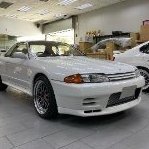Rear Strute Brace Preload?
Announcements
-
Similar Content
-
Latest Posts
-
This was a huge help. We followed the steps, although shifting into 2nd was actually into 3rd for us, and 1st was into 2nd ( steps 9 and 11) . The long flash was the 4th flash. So shift solenoid A is possibly the culprit. Is this inside the transmission itself? Or is it accessible by just front the pan? Or is it bolted to the outside of the transmission? Thanos for your help everyone
-
Can you enlighten me on your best practice regarding these hoses? I don't wanna make the same mistake if you already got a better solution.
-
I have some silicon hoses already, for example engine to watercooler. But yeah, I get the sentiment. The lower intercooler silicon hose is drippy too, despite not being very old. Does anyone except Nismo make these same lines out of rubber? Long term I think they'd be the better replacement, especially since the car won't live as hard a life anymore as in the past nor be driven as often.
-
I know most issues are just age related. But for example the turbo oil drains, there is dash adapters for these and you can just make a braided teflon line for them and (probably) never have them leak again. Also not terribly expensive. Can you even get the factory hardlines from new? Or are they repairable if they break?
-
I know it'd be much much easier with the tool. I hope I can find one that won't take 3 weeks to get to me an isn't a "Asian models kit" that has tons of (to me) useless adapters for a load of cash. It's a summer project/fun car. I do wanna enjoy it, without endless downtime over and over. So yeah I would even go and buy an engine crane + stand to save myself the trouble of hard to reach or unreachable places going bad later on. Would also be a good opportunity to put on a Fluidamper, renew the mains seals and stuff like that. I have some money on the side that I can use for that, what I wouldn't want to or be able to do is let everything be done by a shop or have my engine completely rebuild right now. I intend to do most of the "doable" jobs myself. Pulling an engine can't be that hard, can it?
-







Recommended Posts
Create an account or sign in to comment
You need to be a member in order to leave a comment
Create an account
Sign up for a new account in our community. It's easy!
Register a new accountSign in
Already have an account? Sign in here.
Sign In Now